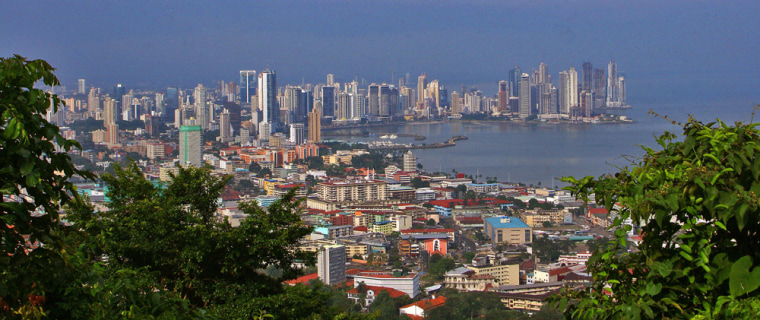Panama is one of the key crossroads in the world, the land bridge between North America and South America and the waterway between the Atlantic and the Pacific, yet it seems to be perpetually a decade or two behind always-trendy Costa Rica in drawing crowds of tourists. This is true even though Panama has all the elements to qualify as a Central American hotspot: teeming wildlife, sandy beaches, scuba diving, world-class fishing, widespread English proficiency, reliable transportation and a cosmopolitan capital city. The country even uses the U.S. dollar as its currency, so American visitors don’t have to worry when the dollar takes a dive abroad.
So what’s the hang-up?
As in many Latin American countries, past unrest is partly to blame for the low visitor numbers. Democracy has been in place only since 1989, when Manuel Noriega was ousted, and Panama has controlled the Panama Canal only since 1999. Leaders have made up for lost time, however, and today the economy is booming, the canal is in expansion mode, and the high-rise skyline of Panama City is dotted with construction cranes. In general, Panama is a safe and stable place to travel or retire.
I just spent a week and a half in Panama, traveling from the Pacific, through the canal, and into the Caribbean on the Discovery, a small, specially-built catamaran operated by Panama Marine Adventures. There were just 24 people on the ship, and we saw very few tourists, but we saw plenty of other creatures — from toucans to crocodiles to sloths.
Following a river into the Darien Gap, the birdwatchers had a heyday, spotting dozens of magnificent frigatebirds, bare-throated tiger herons, ospreys, blue-footed boobies and wintering woodpeckers. Panama is a narrow land bridge, the midpoint of many avian migration routes, and more than 900 species of birds have been recorded here. It is also home to some 220 species of mammals and 354 species of reptiles and amphibians. Whether on the Pearl Islands in the Pacific or on Lake Gatun in the middle of the canal, everywhere our binoculars focused there seemed to be something moving around. Fortunately, the crocodiles kept their distance.
The Smithsonian Institution has set up several research stations in Panama to study tropical plants and animals. Once off-limits to visitors, the Barro Colorado Island nature reserve, in the middle of Lake Gatun, is now open to a few local adventure companies like Ancon Expeditions, which organizes walking tours with a Smithsonian guide. Don’t worry, the 70 species of bats on the island come out only at night.
Transiting the Panama Canal is an experience like no other, of course. Where else can you go from one ocean to another in the space of one day? Engineering types go gaga over the 700-ton steel doors and locks built big enough to have held the Titanic. Others laze on a balcony, cocktail in hand, as their ship moves up and down across the Continental Divide.
Panamanian architecture doesn’t draw visitors the same way as the canal and wildlife, but there are some interesting buildings and monuments dating to the Spanish colonial period. Parts of the original 15th-century Pacific settlement can still be seen in the Old City precinct of the capital, and several colonial forts on the Caribbean coast are open to visitors. The old “Camino Real” town of Portobelo, on the historic gold route, is flanked by three fortresses and is a UNESCO World Heritage Site. The 17th-century Casco Viejo section of Panama City is being revived after a long period of neglect. Investors are busy restoring crumbling old buildings and the historic facade of the original Hotel Colon will soon welcome visitors to a five-star reproduction inside: Hotel Casco Antiguo.
Panama is often pitched as “Costa Rica without the crowds,” but there is one area where it clearly tops its better-known neighbor: local handicrafts. The Kuna women of the San Blas islands produce colorful molas, pieces of reverse-appliqué embroidery that can be used as decoration or incorporated into clothing and bags. The Embera Indians of the Darien jungle make reed baskets that are admired around the world, as well as sculptures carved from the tagua palm nut, nicknamed “vegetable ivory.”
All of Panama’s attractions come in a package that is easy on visitors. The roads are good, you can drink the water, a phone call home will cost 5 or 10 cents, and high-speed Internet access is 75 cents an hour from an Internet café. As our boat trip ended in Portobelo, we stopped off at a local cantina for drinks and dancing. I picked up the tab for 23 Balboa beers as we departed. No, I’m not a big spender: at 75 cents a beer, I paid with a $20 and said, “No cambio, gracias.”
For more information:
Tim Leffel is author of the books "" and "". He also edits the award-winning narrative Web 'zine .
